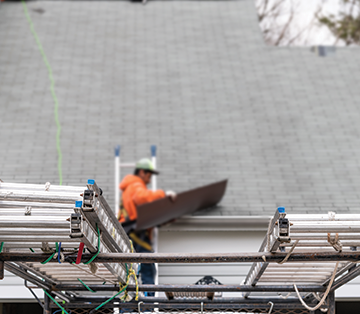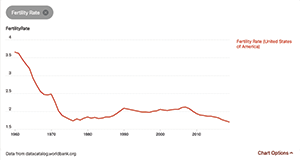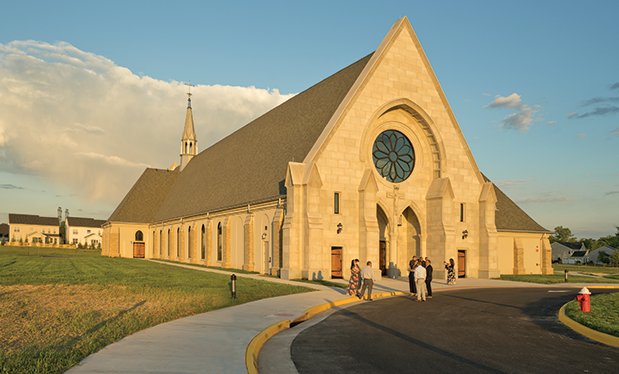
The busy roofing season is in full swing and hampered only by a lack of materials and labor. Describing those factors as two minor elements of a thriving roofing company would be like asking Mary Todd Lincoln, “Well, aside from thaaat, how was the theater?” Right now, labor and materials are the only things that matter. And though supply chains eventually will function properly again, workforce woes remain an existential long-term issue.
I recently was asked whether the roofing industry is simply fighting for a shrinking slice of a shrinking pie in the labor market. The context behind the question is that fewer people have been entering the trades in recent years and the roofing industry is simply competing within that smaller population pool.
For much of the past few years, that’s been true. But it’s even worse than simply a lack of workers in the trades because the U.S. population is growing at a smaller rate than ever, too. Not only is the pie of people entering the trades shrinking, but the bakery making all the possible pies in the U.S. also is shrinking. (I am going to ride this metaphor as far as I can!)
In 2021, the U.S. population grew at the slowest rate since the government began keeping records in 1790, increasing only 0.1% with a net addition of roughly 390,000 people. This was only the second year since the 1930s that raw growth was less than 1 million people … and 390,000 is well shy of 1 million! There are a few reasons for this demographic crisis.

|

|
The U.S. birth rate has been declining for decades and currently is roughly half what it was during the 1960s. For every two parents in the U.S., roughly 1.7 children will replace them versus 3.5 a few decades ago. That figure is not enough to maintain the population let alone grow it. Follow that trend for a few decades, and the effects are felt acutely. This trend has been common in most industrialized nations, and many European nations already have encountered it.
The math works like this—a nation’s net population growth can be thought of as a simple equation:
Population growth = Domestic births + Immigration – Domestic deaths – Emigration
With U.S. domestic birth rates declining for decades, immigration growth generally has been offsetting the decline. However, lawmakers declared war on immigration—both legal and illegal—and the COVID-19 pandemic slowed the rate of immigration even further. As recently as 2016, net immigration to the U.S. exceeded 1 million people per year. But immigration has since collapsed by about 75%, falling below 250,000 people in 2021.
Without sufficient immigration, our nation won’t grow.
Now, some may rightly point out the “deaths” portion of the population growth equation and that people are living longer than they did in the 1960s and many are working longer, too. Both are true. In 1965, the U.S. life expectancy was a smidge over 70 years, and in 2019, the average American could expect to live until he or she was nearly 79. But that gain in life expectancy doesn’t eliminate the demographic crisis; it simply delays it in some ways (like allowing some individuals to work longer) and exacerbates other aspects (such as Social Security and pension plans having more users for longer time frames all while fewer young people are paying into the programs, for example).
An aging workforce is something the roofing industry cannot outrun. The Roofing Alliance conducted a demographic study that showed, for example, more than one out of three roofing workers in the Northeast are over the age of 55. One-third of the region’s roofing workforce could reasonably be retired in less than 10 years. Let that sink in.
Left unchecked, we’re facing incredible demographic challenges that soon will be crises.
One path forward is increased immigration via a legal, rigorous but functioning system. That system doesn’t currently exist, but NRCA continues its work to be an active part of the solution and ready for when lawmakers come to the table and are forced to address the issue.
Another path forward is being more efficient—providing the same amount of goods and services with fewer workers. Technology has been improving efficiency since the invention of basic tools, and each round of new technology or improvement in technique allows us to produce (or install) more efficiently and effectively. Think of the difference in estimating a roofing job during the 1960s versus today. Or the roof system advances that have allowed roof systems to be installed more quickly than before. Innovations and advancements will replace some human labor as labor becomes harder to find.
Training and certification also play roles in efficiency, especially in short to mid time frames. Training helps ensure new staff are equipped and onboarded effectively so they are contributing to the bottom line more quickly. Certification makes sure those on a job are able to complete tasks correctly and efficiently the first time.
NRCA has invested millions of dollars in workforce development resources to help members and the roofing industry and will continue to do so because, candidly, with the smaller demographics pie the industry (and nation) are splitting, we have to.
MCKAY DANIELS is NRCA's CEO.
This column is part of News + Views. Click here to read additional stories from this section.



